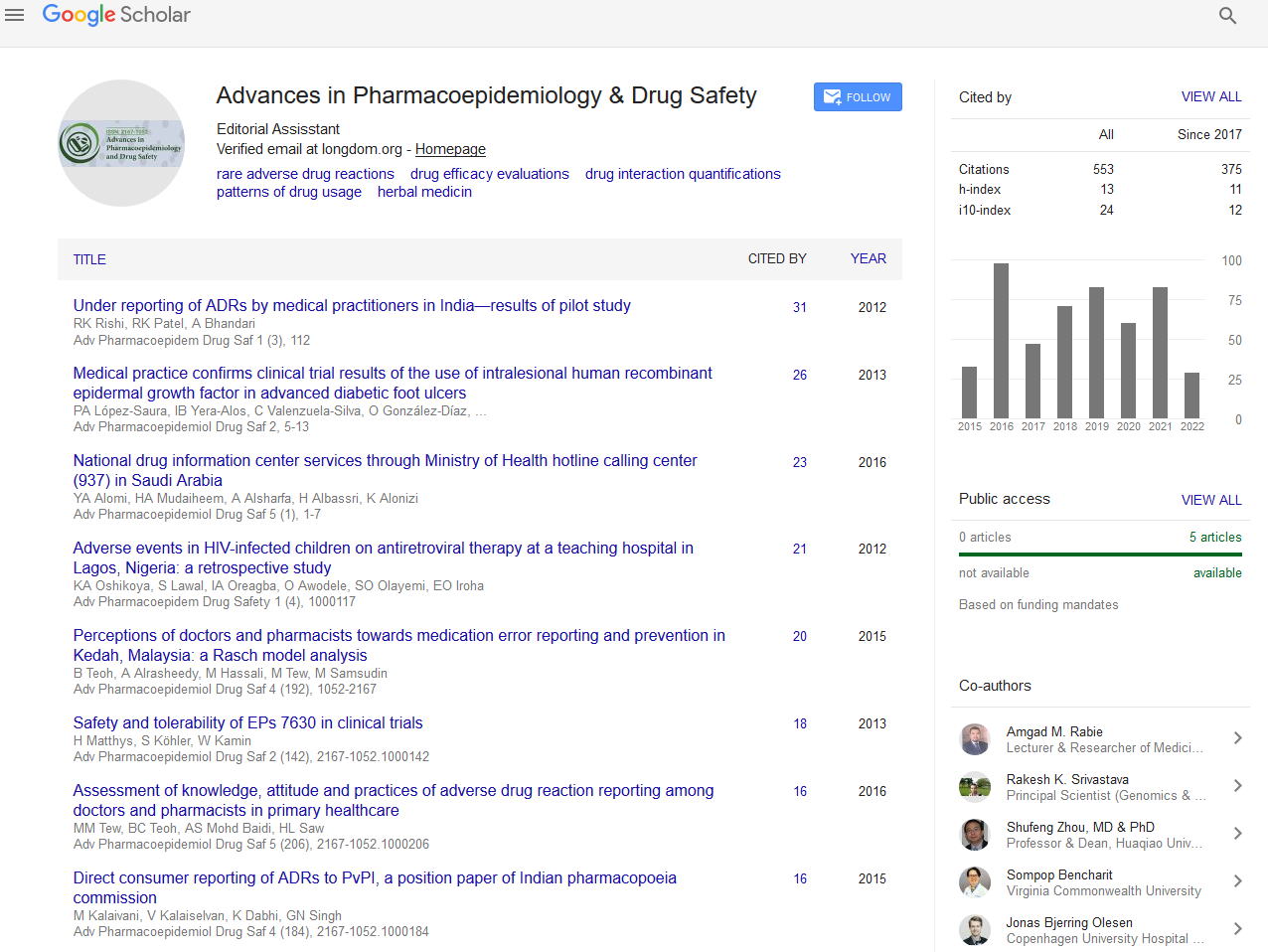Indexed In
- Open J Gate
- Genamics JournalSeek
- Academic Keys
- JournalTOCs
- RefSeek
- Hamdard University
- EBSCO A-Z
- SWB online catalog
- Publons
- Geneva Foundation for Medical Education and Research
- Euro Pub
- Google Scholar
Useful Links
Share This Page
Journal Flyer

Open Access Journals
- Agri and Aquaculture
- Biochemistry
- Bioinformatics & Systems Biology
- Business & Management
- Chemistry
- Clinical Sciences
- Engineering
- Food & Nutrition
- General Science
- Genetics & Molecular Biology
- Immunology & Microbiology
- Medical Sciences
- Neuroscience & Psychology
- Nursing & Health Care
- Pharmaceutical Sciences
Abstract
In Vitro Antischistosomal Activity and Cytotoxicity of 5-Methoxylated Flavones fom Vochysia divergens, a Flood-Adapted Species from Brazilian Pantanal
Pimenta LP, Kellner Filho LC, Liotti RG, Soares MA, Aguiar DP, Magalhães LG, Oliveira PF, Tavares DC, Andrade Silva ML, Cunha WR, Pauletti PM and Januario AH
Background: Vochysia divergens is native to the Amazon Basin and considered an invasive species in the Brazilian Pantanal. In this work, the ethanolic extract of V. divergens leaves was chemically investigated and evaluated in vitro against Schistosoma mansoni adult worms together with the isolated compounds.
Methods: The samples were available at concentrations of 12.5, 25, 50 and 100 μM. The parasites were kept for 4 days and monitored every 24 h to evaluate their viability and motor activity comparing with the positive control praziquantel. The cell viability of isolated flavones as determined by XTT assays in V79 cells.
Results: The flavones 3′,5-dimethoxy luteolin-7-O-β-glucopyranoside, 5-methoxy luteolin and 3′,5-dimethoxy luteolin were isolated from V. divergens. Flavone 5-methoxy luteolin caused the death of 25% of male and female adult S. mansoni worms in 24 h at 100 μM and also reduced their motor activity. Flavones 3′,5-dimethoxy luteolin-7-O-β-glucopyranoside and 3′,5-dimethoxy luteolin were able to slightly reduce the motor activity to 25% within 24
h at 25 μg/mL and 12.5 μg/mL, respectively, but only in male worms. The results were compared with the flavone luteolin. For XTT assay in V79 cells the IC50 values were 1468.4 ± 10.5 μM, 5946.6 ± 25,1 μM, > 7960.8 μM and 270.6 ±9.3 μM for compounds 3′,5-dimethoxy luteolin-7-O-β-glucopyranoside, 5-methoxy luteolin, 3′,5-dimethoxy luteolin and luteolin, respectively.
Conclusion: To the best of our knowledge, flavones 5-methoxy luteolin and 3′,5-dimethoxy luteolin are reported for the first time as constituents of V. divergens and the Vochysiaceae family.


